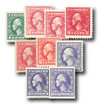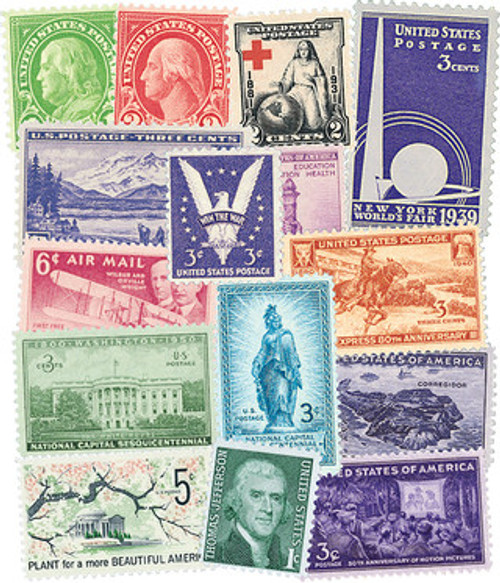
1918-20 U.S. Offset Printing Collection,Choose Mint (7 stamps) or Used (9 stamps)
# 525//35 - 1918-20 U.S. Offset Printing Collection - Choose Mint (7 stamps) or Used (9 stamps)
$18.50 - $69.95
Order Your Set of 100-Year-Old Offset Printing Stamps Today
This set of stamps, issued between 1918 and 1920, includes some of the first stamps produced by the Bureau of Engraving and Printing using the Offset Printing method. Some of the stamps have 11-gauge perforations and others were issued imperforate.
The Unused set includes:
The Used set includes:
Offset Printing
The Bureau of Engraving and Printing experimented with a printing method known as “offset printing” to increase production and save money. Photographs of a die proof used for flat plate and rotary stamps were enlarged and “re-touched” to make the details clearer. A photo negative of the altered image was then shrunk back to normal size and placed on a sensitized plate, one after the other. Next, an entire “mask” (image) of the plate was used to create the offset plates.
This allowed the bureau to create plates of much greater size than possible with the engraved method. Plates contained 400, 800, or 1600 stamp subjects.
Identifying Offset Printed Stamps
The ink on offset printed stamps feels smooth and flat. Stamps made by an engraved flat plate or rotary press have a textured feel, due to the raised ink on the surface. Offset printed stamps also often have poor-quality images. They typically don’t have as distinct detail as engraved stamps. Double-printed stamps were also relatively common. Sometimes sheets were so lightly printed they were run through again to save paper.
Order Your Set of 100-Year-Old Offset Printing Stamps Today
This set of stamps, issued between 1918 and 1920, includes some of the first stamps produced by the Bureau of Engraving and Printing using the Offset Printing method. Some of the stamps have 11-gauge perforations and others were issued imperforate.
The Unused set includes:
The Used set includes:
Offset Printing
The Bureau of Engraving and Printing experimented with a printing method known as “offset printing” to increase production and save money. Photographs of a die proof used for flat plate and rotary stamps were enlarged and “re-touched” to make the details clearer. A photo negative of the altered image was then shrunk back to normal size and placed on a sensitized plate, one after the other. Next, an entire “mask” (image) of the plate was used to create the offset plates.
This allowed the bureau to create plates of much greater size than possible with the engraved method. Plates contained 400, 800, or 1600 stamp subjects.
Identifying Offset Printed Stamps
The ink on offset printed stamps feels smooth and flat. Stamps made by an engraved flat plate or rotary press have a textured feel, due to the raised ink on the surface. Offset printed stamps also often have poor-quality images. They typically don’t have as distinct detail as engraved stamps. Double-printed stamps were also relatively common. Sometimes sheets were so lightly printed they were run through again to save paper.








